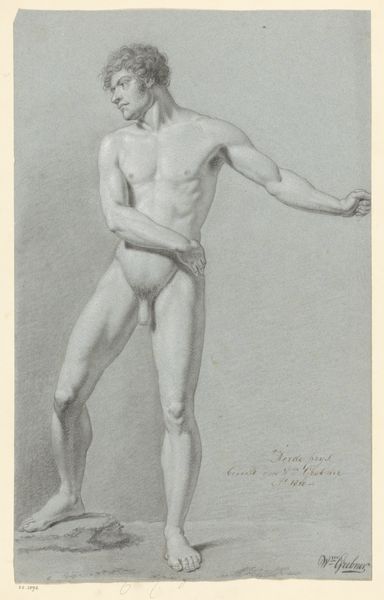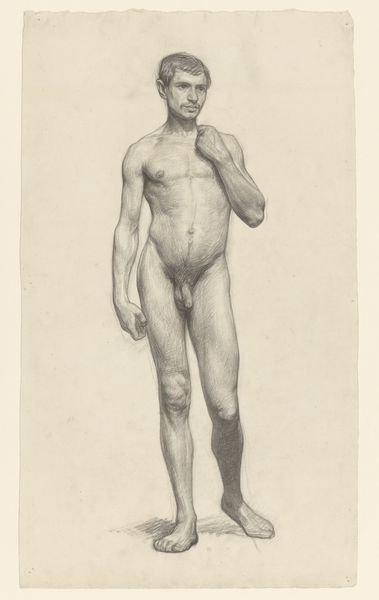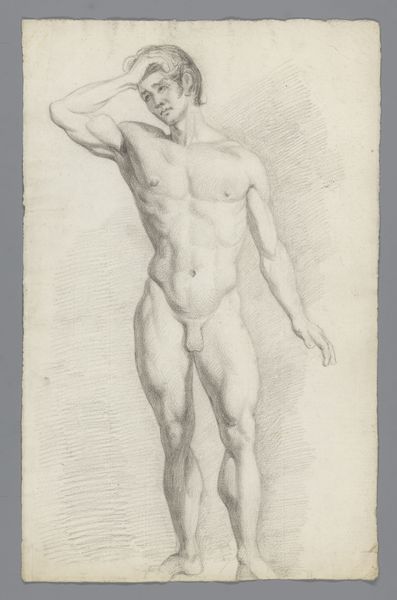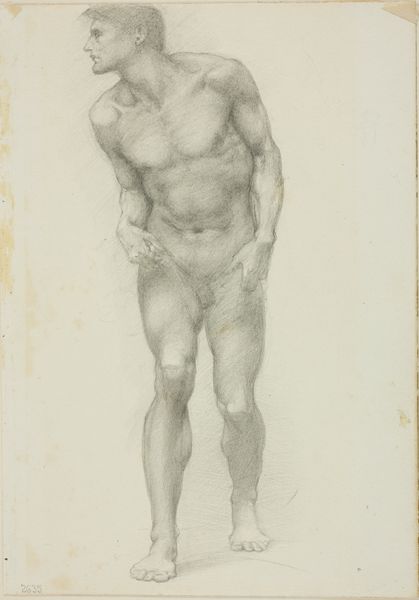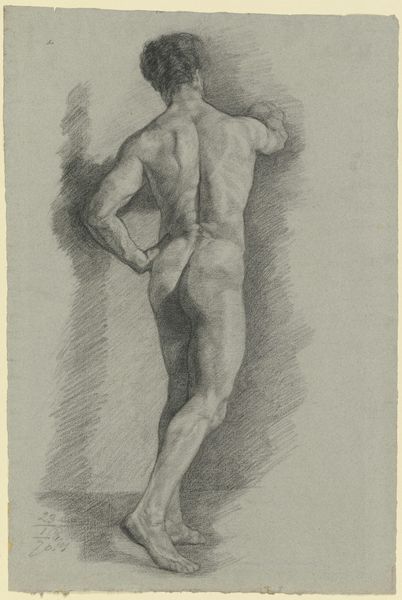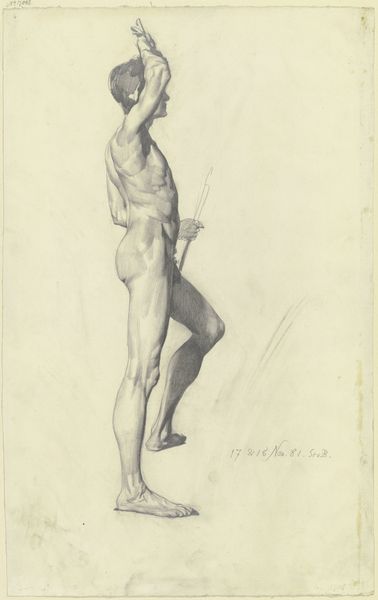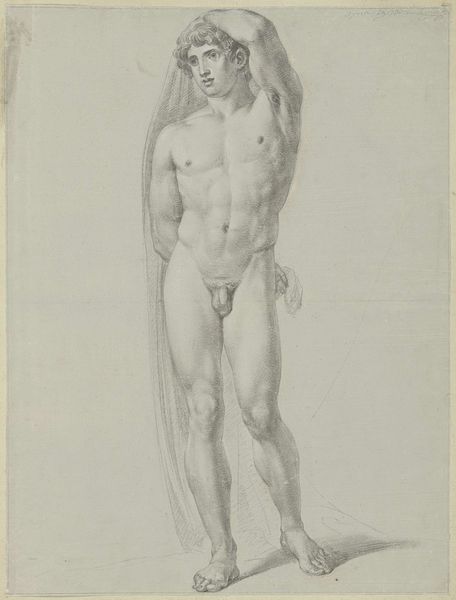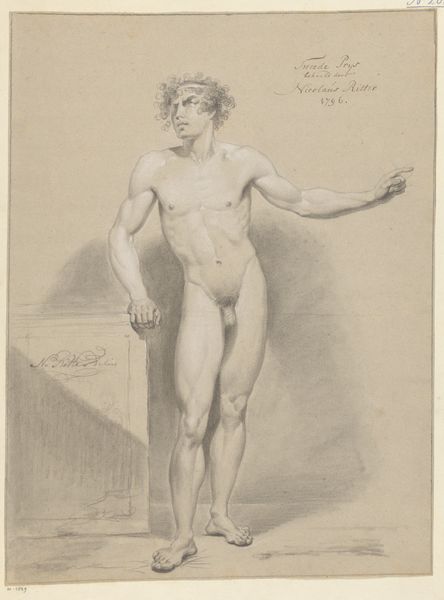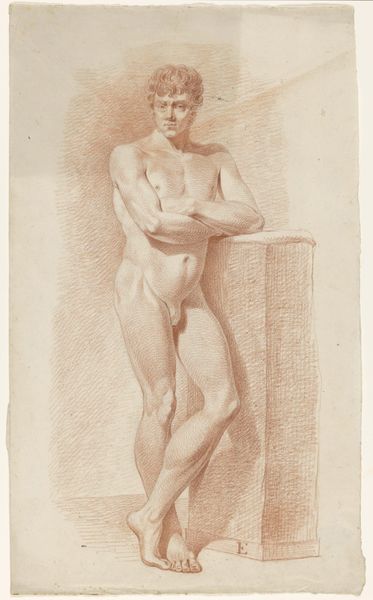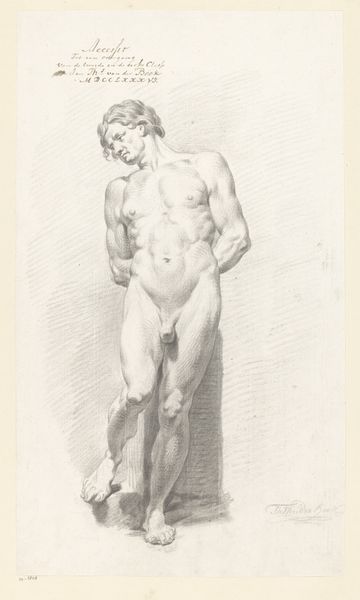
Gips van een antiek beeld van een staande naakte man Possibly 1828
0:00
0:00
johannestavenraat
Rijksmuseum
drawing, pencil
#
drawing
#
classical-realism
#
figuration
#
pencil
#
history-painting
#
academic-art
#
nude
Dimensions: height 580 mm, width 342 mm
Copyright: Rijks Museum: Open Domain
Johannes Tavenraat made this pencil drawing of a plaster cast of an antique, standing, nude man. During the 19th century, the classical male nude was a symbol deeply entwined with notions of ideal beauty and masculinity, against which the artist sought to measure himself. The male nude was considered in those days, to be the epitome of aesthetic perfection. Tavenraat’s choice to depict a plaster cast rather than a living model introduces an interesting layer. Plaster casts, often copies of classical sculptures, were common in art academies, serving as models for students to study form and anatomy. Consider the act of drawing a copy, the layers of removal from an original body. How does this impact the meaning we can derive from the artwork? What does it say about the construction, and the idealization of masculinity at this time? This work invites us to think about the complex ways in which bodies are represented, copied, and idealized.
Comments
No comments
Be the first to comment and join the conversation on the ultimate creative platform.
